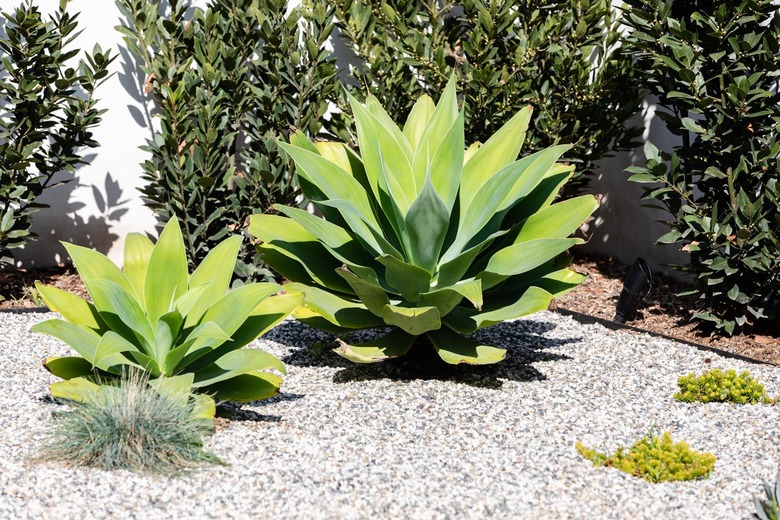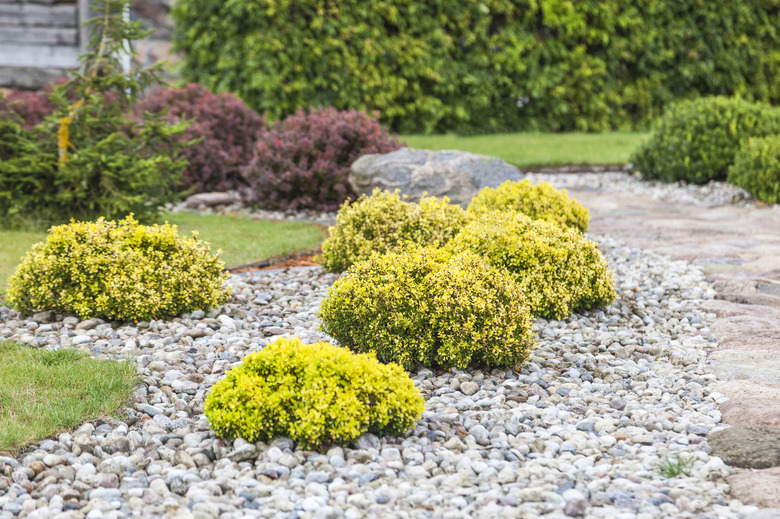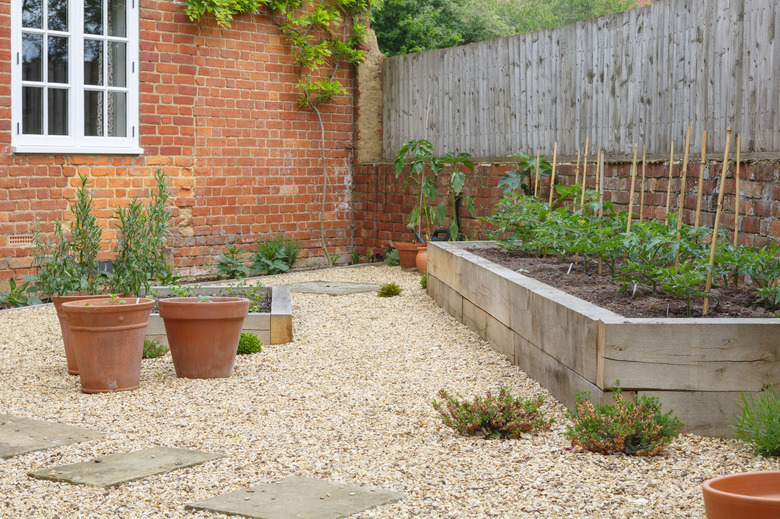A DIY Guide To Landscaping With Gravel
We may receive a commission on purchases made from links.
There are a lot of benefits to landscaping with gravel. It's durable enough to hold up in even the most heavily trafficked areas yet it is far more flexible than just about any other hardscape option and can be easily changed when you want to modify your garden. It blends in with a wide variety of settings, so you can find some type of landscaping rock to fit the style of any outdoor space. Crushed stone is so easy to work with that even those doing a DIY install can finish enhancing their landscape with gravel over the course of a weekend.
Choosing a Gravel Type for Your Landscape
Choosing a Gravel Type for Your Landscape
Essentially, any type of crushed stone can be considered gravel. As you might imagine, this means there is a massive variety of colors, sizes and shapes available. It's often a good idea to choose gravel native to your region since it will be less expensive, but if you're willing to pay more and are looking to cultivate a specific style in your garden, you could even import Mexican beach pebbles or tumbled lava rock instead for a truly unique look.
A particularly popular choice for landscaping with gravel is pea gravel, which is made up of small rocks around 5/8 of an inch wide. Alternatively, many people like the uniform and smooth appearance of decomposed granite, which is granite that has been broken down into a blend of silt, sand and small rock fragments. When it comes to larger sizes, you can choose between river rock, which is smooth, and crushed stone, which has jagged edges.
You can find a good selection of gravel at a local quarry or a landscape or masonry materials supplier, all of which will have a variety of gravel in a number of sizes and shapes. Buying in bulk is much cheaper than buying gravel by the bag at a home improvement store or garden center. Almost every area will have a wide selection of gray and brown gravel.
If you're looking for specific shades, marble and limestone are popular options for light gravel, while basalt, shale and obsidian are good choices for dark color schemes. If you're looking for more vivid colors such as reds or greens, you may need to buy gravel imported from elsewhere if it is not naturally available in your area, so expect to pay a bit more.
Consider Your Intended Use
Consider Your Intended Use
When it comes to using gravel to add visual interest around flower beds, the right choice is entirely a matter of personal preference. For pathways, spend some time considering your needs. You may love the look of a gravel path made from 2-inch river rocks or the idea of a gravel patio made from decomposed granite that sits just outside your back door. However, river rock — particularly large stones — can be difficult to walk on since the stones shift much more than crushed stone. As for decomposed granite, when it is placed next to the entry point of a home, it is difficult not to track it into the house, and it quickly scratches hardwood floors.
Before you begin your project, you need to spend some time thinking about the right type of material for your specific gravel landscaping purposes. Search online for the right granite type based on your needs or ask someone at your local quarry or landscaping materials supplier.
Generally speaking, crushed rock is durable and can handle a lot of weight, making it a great option for high-traffic areas, which is why it's the go-to paving material for gravel driveways. However, you'll never want to walk on crushed rock without shoes. For a comfortable walking surface when walking in bare feet, look for natural stones under 1/4 inch in size, which are smooth and give way enough to be comfortable for walking without losing stability.
Decomposed granite is comfortable for walking and offers less resistance than other gravel materials when you need to pull things like rolling trash cans along a path, but the scratchy dust can be a major drawback, especially on a path leading right into the home. On the other hand, if your path is mostly made up of flagstone, stepping stones or pavers, you can use just about any gravel that complement the pavers.
Tips for Landscaping With Gravel
Tips for Landscaping With Gravel
Wherever and however you install gravel, you'll almost always need some type of edging to keep it in place rather than letting it mix in with the mulch around your plants or the grass in your yard. While many people instinctively go for plastic edging, it's not the right choice for everyone. Metal edging can be more sturdy and long-lasting if you like having an invisible barrier. However, you might want to consider something more visually stimulating, such as untreated steel, which can add rustic charm to your garden, or larger paving stones that match the gravel, which will give you a well-defined edge with a seamless feel.
When installing decomposed granite, you can reduce much of the dust and increase the durability by installing in layers and compacting each layer as you go. Gardenista also recommends using a stabilizing product that helps bond the material together. Be aware that you'll periodically need to refresh the path by adding another layer of decomposed granite and compacting it like you did during the first installation.
While gravel landscaping is generally a low-maintenance option, it's important to recognize that it still does require some upkeep. Rake your path, walkway or patio regularly to keep the surface even and to prevent bare areas. If you notice that the gravel level seems a little low, add new gravel to the area and rake it until it lays evenly.
Though many people use landscape fabric when using gravel in a DIY home improvement project, even if you use it, you should be prepared to pull weeds here and there since dirt or dust will eventually settle between the stones. Also be warned that landscape fabric can often find its way through the top of the rocks, which is why many professional designers avoid it altogether even if it means more weeding.
Alternative Gravel Landscaping Ideas
Alternative Gravel Landscaping Ideas
Some people like the hard edges of a well-defined gravel path. Others like a softer, more natural appearance. While it's always a good idea to use edging to keep your gravel in place, if you want less-distinct edges, use hidden edging and plant some ground cover near the edges so they will drape over the borders. Sunset recommends using Tom Thumb cotoneaster (Cotoneaster apiculatus 'Tom Thumb," USDA zones 4-7) to gently cover the edges of landscaping with gravel paths beside it.
To create more visual interest in the areas featuring gravel, try combining rocks of varying sizes. This doesn't just have to involve using stone edging, but you can also try creating a riverbed appearance, which is becoming one of the more popular landscaping ideas for drainage ditches.
For a particularly dramatic look, consider using glass gravel in all or part of your project. It comes in a wide array of colors that can add instant curb appeal to any project. Blue glass gravel looks especially spectacular when laid out like a flowing stream.


